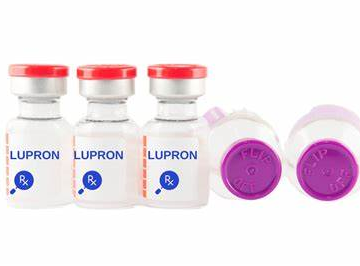
Lupron with IVF: A Comprehensive Guide to Empower Your Fertility Journey
Introduction
If you’re exploring in vitro fertilization (IVF), you’ve likely heard about Lupron (leuprolide acetate). Many fertility clinics use Lupron as part of an IVF protocol to improve the chances of a successful pregnancy. Because IVF can already feel overwhelming—filled with medication schedules, doctor’s appointments, and emotional ups and downs—it’s normal to have questions about adding yet another medication.
This comprehensive guide will walk you through what Lupron is, why and how it’s used in IVF, potential side effects, and practical tips for making your experience as smooth as possible. We’ll also dive into the latest research, present ideas not often discussed, and give you real-world advice. By the end of this article, you’ll feel far more confident about whether Lupron is right for your fertility journey.
What Is Lupron?
Core Idea: Lupron (generic name: leuprolide) is a synthetic hormone commonly used in IVF to regulate the reproductive hormones. It belongs to a class of drugs called GnRH agonists, which affect the pituitary gland, leading to changes in how much estrogen and other hormones the body produces.
Why Do Fertility Specialists Use Lupron?
-
Control Over the Cycle
In IVF, timing is everything. Lupron helps prevent the ovaries from releasing eggs prematurely. By controlling ovulation, doctors can optimize the egg retrieval schedule. -
Improved Egg Quality
Some protocols suggest that when your hormones are carefully managed, you might produce healthier eggs. -
Endometriosis Management
Lupron is also used to help manage endometriosis, a condition that can reduce fertility. By suppressing estrogen, Lupron sometimes improves the uterine environment.
Expert Quote (1)
“Lupron can be a game-changer in IVF because it gives doctors finer control over the ovarian stimulation process,” says Orion Nightingale, a fertility specialist who has worked with numerous patients on advanced IVF protocols.
Why Is Lupron Used in IVF?
Core Idea: During a normal menstrual cycle, your body naturally releases hormones, including follicle-stimulating hormone (FSH) and luteinizing hormone (LH). These help your ovaries mature eggs, which are released during ovulation. In IVF, doctors often want to prevent natural ovulation so that they can retrieve as many mature eggs as possible at once.
How Does Lupron Help?
-
Suppresses LH Surge
The primary function of Lupron in an IVF cycle is to suppress the luteinizing hormone surge. A premature LH surge can trigger early ovulation, which would prevent egg retrieval and derail the IVF cycle. -
Creates a “Blank Slate”
By suppressing your natural hormone production, Lupron creates a more predictable environment. Then, when you start ovarian stimulation drugs (like gonadotropins), doctors have a “clean slate” to work with. -
Ensures Synchronization
Lupron helps synchronize the growth of multiple follicles in your ovaries. Instead of having one dominant follicle outgrow the others, you can have multiple follicles develop at a similar pace, leading to a higher number of potentially mature eggs.
Different Lupron Protocols for IVF
Core Idea: Not all IVF protocols involving Lupron are the same. Depending on your medical history, hormone levels, and fertility goals, your doctor may recommend one of several Lupron protocols.
Long Lupron Protocol
Overview:
- Usually involves starting Lupron about a week before your expected menstrual period.
- You’ll continue Lupron through the stimulation phase until the day of the “trigger shot” (often hCG or sometimes Lupron itself).
Pros:
- Can lead to a lower risk of ovarian hyperstimulation syndrome (OHSS).
- Generally well-established and widely used.
Cons:
- The extra days of medication may cause more side effects.
- Sometimes slightly longer total cycle length.
Who Might Use It?
- Women with normal ovarian reserve.
- Women who have consistent cycles.
Short Lupron Protocol
Overview:
- Lupron is started around the beginning of your cycle, often on Day 2.
- The duration of Lupron is shorter compared to the long protocol.
Pros:
- Shorter total IVF cycle duration.
- Some women experience fewer side effects.
Cons:
- Not as commonly used as the long protocol, so doctors might have less experience with it.
- Possibly a higher chance of premature LH surge in certain patients if not monitored carefully.
Who Might Use It?
- Women with certain hormone levels or previous IVF cycles that responded poorly to the long protocol.
Microdose Flare Protocol (Lupron Flare)
Overview:
- In this protocol, Lupron is given in tiny “microdoses” starting on Day 2 of your cycle.
- Instead of fully suppressing your hormones, the microdose can stimulate a small flare of FSH and LH before suppression sets in.
Pros:
- Sometimes beneficial for women with poor ovarian response.
- May help recruit more follicles in a “low responder.”
Cons:
- Timing is delicate; requires close monitoring.
- Can still lead to possible side effects like mood swings and headaches.
Who Might Use It?
- Women with diminished ovarian reserve or who have had few eggs retrieved in past cycles.
- “Poor responders” to standard protocols.
Lupron vs. Other IVF Medications
When researching IVF, you’ll come across other GnRH antagonists like Ganirelix or Cetrotide, which are also used to prevent premature ovulation. They do so more directly and usually do not cause an initial hormone “flare,” but they work differently in the body compared to Lupron.
| Medication | Type | How It Works | Pros | Cons |
|---|---|---|---|---|
| Lupron | GnRH Agonist | Temporarily overstimulates & then suppresses hormones | ✔️ Well-studied ✔️ Can help certain endometriosis cases |
❌ Initial “flare” effect ❌ Potentially more side effects |
| Ganirelix | GnRH Antagonist | Directly blocks GnRH receptors in the pituitary | ✔️ Quick action ✔️ Reduced flare symptoms |
❌ Might not be ideal for all patients ❌ Different side effect profile |
| Cetrotide | GnRH Antagonist | Similar to Ganirelix | ✔️ Straightforward timing ✔️ Generally fewer headaches |
❌ More frequent injections ❌ Expensive in some regions |
Which One Is Better?
- Depends on Individual Factors: Your doctor will examine your medical history, hormonal profile, and previous cycle outcomes (if any) before deciding.
- Personal Preference: Some patients prefer the shorter treatment time with GnRH antagonists, while others find comfort in the well-established track record of Lupron.
The Role of Lupron in Each Stage of an IVF Cycle
Core Idea: While protocols differ, Lupron’s function remains consistent: help your body prepare for ovarian stimulation and prevent premature ovulation. Here’s a quick breakdown of what Lupron might look like in a cycle, noting that your timeline may vary.
Pre-Stimulation Stage (Suppression Phase)
- Timing: You might start Lupron about 7-10 days before your period (for long protocols) or on Day 2 (for short or microdose flare protocols).
- Purpose: Suppresses your natural cycle so that the growth and release of eggs can be timed precisely with injectable fertility medications (e.g., FSH, LH).
Stimulation Stage
- Timing: Once your period begins, your doctor will adjust Lupron and add gonadotropins (FSH and LH).
- Purpose: Multiple follicles (egg sacs) are stimulated to grow, all under the control of your fertility specialist.
Trigger Shot & Egg Retrieval
- Timing: When your follicles reach the right size, you’ll get a “trigger shot” (usually hCG or sometimes Lupron is used as a trigger).
- Purpose: The trigger shot causes final egg maturation. If your protocol calls for a Lupron trigger, it helps avoid severe ovarian hyperstimulation (OHSS). After about 34-36 hours, your eggs are ready for retrieval.
Lupron Injection Tips and Best Practices
Core Idea: Giving yourself any medication by injection can feel intimidating. Thankfully, Lupron shots are often subcutaneous (into the fatty layer just under your skin) rather than into muscle. With some practice, most people handle it with minimal stress.
Preparing for the Injection
-
Gather Supplies
- Lupron vial or prefilled syringe
- Needle and syringe (if not prefilled)
- Alcohol swabs
- Small gauze or cotton ball
-
Wash Your Hands
- Proper hygiene reduces the risk of infection.
-
Clean the Injection Site
- Common sites: lower abdomen or thigh.
- Use an alcohol swab and let it dry.
Administering the Injection
- Draw the Medication
- If using a vial, insert the needle into the vial and withdraw the correct dose.
- Pinch the Skin
- Pinch a small section of your abdomen (about 1 inch).
- Insert the Needle
- Gently insert at a 45- to 90-degree angle.
- Inject Slowly
- Depress the plunger steadily.
- Remove the Needle & Apply Pressure
- Remove the needle at the same angle you inserted it.
- Press the area gently with gauze.
Dealing with Injection Anxiety, Lumps, and Bruises
- Anxiety: Try a quick relaxation technique, like deep breathing or listening to calming music.
- Lumps: A small lump can form under the skin if the medication pools. Gently massage the area, or apply a warm compress afterward.
- Bruises: Minor bruising is common. Rotate your injection sites to give each area time to heal.
- Needle Size: Usually a short, thin needle (28-30 gauge) is used, making the process less painful.
Checklist for Smooth Injections
- ✔️ Rotate injection sites daily.
- ✔️ Keep track of your doses in a medication log.
- ✔️ Use a fresh needle each time.
- ❌ Don’t inject through clothing.
- ❌ Don’t skip your doctor’s instructions on dosage.
Potential Side Effects of Lupron
Core Idea: Because Lupron alters hormone levels, you may experience side effects similar to menopause or PMS. Everyone’s experience is different. Some have only mild symptoms, while others have more noticeable ones.
Common Side Effects
- Hot Flashes: Feeling warm suddenly, especially at night.
- Mood Swings: Irritability or emotional ups and downs.
- Headaches: Often mild but can be frequent.
- Fatigue: A general feeling of tiredness or low energy.
- Nausea: Some report mild stomach upset.
Less Common or More Serious Side Effects
- Bone Density Changes: Prolonged use (many months) of Lupron can impact bone density. Not as typical in a short IVF cycle.
- Allergic Reactions: Rare, but watch for rash, swelling, or trouble breathing.
- Dizziness: Sometimes linked with the medication’s impact on blood pressure.
Expert Quote (2)
“In most IVF protocols, Lupron is used short-term, so many of the long-term side effects are not as concerning. Still, it’s wise to discuss any symptoms with your fertility team,” explains Ophelia, a reproductive endocrinologist who has led multiple clinical studies on IVF medications.
Lupron Cost and Insurance Coverage
Core Idea: Medication costs can be a significant part of IVF. Lupron pricing varies by region, dosage, and your insurance plan. Some insurance policies cover fertility medications, but many do not.
Factors Affecting Cost
- Dosage and Protocol
- Longer protocols naturally require more Lupron, increasing costs.
- Brand vs. Generic
- Generic leuprolide can be cheaper, but availability might differ by location.
- Pharmacy Choice
- Specialty pharmacies often have IVF medication bundles at a discount.
Tips to Manage Lupron Expenses
- Request a Detailed Prescription: Make sure your doctor writes the exact quantity you need so you don’t overpay.
- Shop Around: Compare prices at different pharmacies, including reputable online ones.
- Check Fertility Grants: Some organizations provide financial aid for infertility treatments, which may include medication costs.
- Ask About Coupons or Patient Assistance: Lupron might be eligible for manufacturer discounts.
Lupron vs. Ganirelix: Which Is Better?
Core Idea: While both Lupron and Ganirelix (another medication used to prevent premature ovulation) accomplish similar goals, each has unique benefits. If you’re confused about which is “better,” the answer is: it depends on your specific situation.
| Criteria | Lupron | Ganirelix |
|---|---|---|
| Method of Action | GnRH agonist | GnRH antagonist |
| Usage Length | Often started earlier | Typically started mid-stimulation |
| Common Side Effects | Hot flashes, headaches, mood swings | Headaches, mild injection site reactions |
| Protocol Complexity | Some protocols are longer | Generally shorter |
| Typical Candidates | Broad range, including endometriosis | Patients who prefer minimal “flare,” normal responders |
| Cost Considerations | Possibly more if used longer | Sometimes less if used shorter |
Bottom Line
- Lupron: Well-established, especially beneficial if you have endometriosis or need strong suppression.
- Ganirelix: Good for straightforward suppression without the initial flare, often shorter usage.
Success Rates and Latest Research
Core Idea: How does Lupron influence IVF success rates? Many studies show that for certain groups of patients, especially those with normal to high ovarian reserve, a long Lupron protocol can improve the number of mature eggs retrieved and overall pregnancy rates. However, results can vary.
Notable Findings
-
Improved Egg Quantity and Quality
Some research suggests that carefully timed Lupron usage helps yield healthier eggs by preventing hormonal fluctuations. -
Reduced OHSS Risk
Using Lupron as a trigger shot instead of hCG may reduce the chance of ovarian hyperstimulation syndrome, especially in women with polycystic ovary syndrome (PCOS). -
Endometriosis Management
If endometriosis is a factor, a Lupron-based protocol can calm endometrial lesions, potentially improving implantation rates.
Expert Quote (3)
“Lupron doesn’t guarantee success, but it often provides a more predictable stimulation cycle,” says Caspian Sterling, a reproductive medicine researcher who co-authored a paper on IVF outcomes in women over 35.
Frequently Asked Questions About Lupron with IVF
Below are some common queries people have about Lupron. While these Q&As don’t replace medical advice, they can give you a better grasp of what to expect.
Q1: Can I use Lupron if I have PCOS?
- Answer: Yes, many protocols use Lupron for PCOS patients. Doctors may also use a Lupron trigger shot instead of hCG to reduce the risk of OHSS.
Q2: How does Lupron help with endometriosis?
- Answer: Lupron suppresses estrogen, which can decrease the growth of endometrial tissue. This helps some patients reduce pain and improve the uterine environment before IVF.
Q3: Will Lupron cause me to gain weight?
- Answer: Some women experience temporary bloating or weight changes due to fluid retention. Actual fat gain is less common, but the stress of IVF can lead to lifestyle changes that affect weight.
Q4: Is a Lupron trigger always better than an hCG trigger?
- Answer: Not always. A Lupron trigger is often chosen for patients at high risk for OHSS. In other cases, hCG or a dual trigger (Lupron + low-dose hCG) might yield better results for final egg maturation.
Q5: Can Lupron affect my menstrual cycle long-term?
- Answer: After stopping Lupron, your cycle typically returns to normal within a few weeks. Prolonged use (beyond IVF) may have more lasting effects, but this is rare in standard IVF treatments.
Real-Life Experiences
Core Idea: Hearing about others’ journeys can offer both reassurance and perspective. Remember: individual experiences vary, and no two IVF cycles are exactly alike.
-
Mia’s Experience
- Situation: Mia, 32, had moderate endometriosis.
- Protocol: Long Lupron protocol.
- Outcome: Retrieved 12 eggs, 8 fertilized, 3 high-quality embryos. Mia is now a proud parent of a baby girl.
-
Jasmine’s Experience
- Situation: Jasmine, 39, had diminished ovarian reserve.
- Protocol: Microdose flare (Lupron flare) protocol.
- Outcome: Retrieved 5 eggs, 3 fertilized, 2 embryos transferred, 1 healthy pregnancy.
-
Ava’s Experience
- Situation: Ava, 28, with PCOS.
- Protocol: Long Lupron protocol, switched to Lupron trigger.
- Outcome: Avoided severe OHSS, retrieved 17 eggs, froze some, and transferred 1 fresh embryo. She’s now 5 months pregnant.
Practical Advice for Navigating Lupron with IVF
Core Idea: Whether you’re worried about side effects or scheduling, a few practical tips can make the process more manageable.
Before Starting Lupron
- Plan Your Calendar
- IVF often involves daily or near-daily visits. Mark important dates for blood tests, ultrasounds, and injection times.
- Discuss Supplements
- Some doctors recommend prenatal vitamins, vitamin D, or CoQ10. Always confirm that these won’t interact with Lupron.
During Lupron Usage
- Stay Hydrated
- Helps with headaches and hot flashes.
- Track Symptoms
- Keep a simple journal to note side effects. Your doctor may adjust your dose if needed.
- Use Cooling Techniques
- For hot flashes, carry a small portable fan or dress in layers.
After Completing Lupron
- Follow Post-Retrieval Instructions
- You’ll have sedation on retrieval day; plan for a ride home and a restful environment.
- Monitor for OHSS
- If you triggered with hCG, watch for bloating, rapid weight gain, or severe pelvic pain.
- Emotional Care
- Consider counseling or joining a support group, as the IVF process can be a rollercoaster.
Delving into Lesser-Known Topics
Core Idea: Many online articles focus on the main uses and side effects of Lupron with IVF. Let’s discuss some aspects that often get overlooked.
Mental Health and Lupron
- Mood Changes
- While mood swings are a known side effect, some people also experience anxiety or low mood.
- Coping Strategies
- Practice mindfulness, consider therapy sessions, and keep your fertility team informed about your emotional well-being.
- Medication Interactions
- If you take antidepressants or anti-anxiety meds, talk to your doctor about any possible interactions with Lupron.
Bone Health and Lupron
- Short-Term vs. Long-Term Use
- Extended use of Lupron (often months, especially for conditions like fibroids or severe endometriosis) can affect bone density.
- In typical IVF cycles, usage is shorter (a few weeks), making serious bone loss less likely.
- Prevention
- Discuss dietary calcium or short-term supplements if you’re concerned.
- Weight-bearing exercises may help maintain bone mass.
Lupron Storage and Handling
- Refrigeration
- Some forms must be refrigerated; check your package insert.
- Expiration Date
- Always confirm your Lupron hasn’t expired.
- Travel Considerations
- If you need to travel during your cycle, use an insulated bag or cooler pack to maintain the correct temperature.
Latest Studies or Data on Lupron in IVF
Core Idea: Staying updated with new scientific findings can give you confidence about your treatment.
- Dual Trigger Approach
- Recent research suggests using Lupron alongside a low-dose hCG “dual trigger” can enhance egg maturity rates in certain patients.
- Personalized Medicine
- More fertility clinics are adopting personalized IVF protocols. They analyze hormone levels (like AMH, FSH) and genetic factors to tailor the exact dose of Lupron.
- Freeze-All Strategy
- Some studies show that after a Lupron trigger, it might be beneficial to freeze all the embryos and perform a later frozen embryo transfer (FET), especially if the woman’s estrogen levels were very high. This can reduce the chance of OHSS and might improve implantation rates in certain cases.
Putting It All Together
Core Idea: Lupron is just one part of your IVF journey. It’s useful for suppressing premature ovulation, controlling endometriosis, and optimizing egg retrieval. However, it’s not without its drawbacks, including potential side effects like mood swings and hot flashes.
Remember: No single medication or protocol guarantees IVF success. Factors like age, ovarian reserve, overall health, and the quality of sperm all play significant roles. Lupron can help, but it’s essential to keep a holistic view of your entire fertility plan.
Interactive Q&A and Practical Exercises
Core Idea: Before you go, here are some fun exercises and thought-provoking questions to help you stay engaged with your IVF process. Try them out!
Quick Knowledge Quiz
- True or False: Lupron is always given as an intramuscular injection.
- Multiple Choice: One primary function of Lupron in IVF is to:
A. Increase thyroid hormones
B. Prevent premature ovulation
C. Completely replace estrogen in your body - Fill in the Blank: A common side effect of Lupron is ____________.
(Answers at the very end!)
Reflection Prompts
- Journal Exercise: Write down how you feel about each step of your IVF plan. Identifying worries can make them easier to address with your care team.
- Shared Experiences: Ask friends or online support groups if they used Lupron. What helped them cope with side effects? Could their tips help you?
Mini Self-Care Challenge
- Day 1: Take a 15-minute walk outside to clear your mind.
- Day 2: Listen to a short guided meditation (plenty of free apps and online videos!).
- Day 3: Prepare a healthy meal high in protein and fiber to support your body’s needs.
- Day 4: Do one thing that brings you joy (reading a favorite book, painting, or watching a funny show).
Conclusion
Lupron can feel like yet another hurdle in an already complicated IVF journey. Yet, for many, it provides the hormonal control needed to improve egg quality, reduce the risk of complications, and time egg retrieval perfectly. By learning about the different Lupron protocols—long, short, microdose flare—and how they compare to other medications like Ganirelix, you can have a more informed conversation with your fertility specialist.
Remember, side effects like hot flashes, mood swings, and headaches are common but often manageable through hydration, stress-management techniques, and open communication with your medical team. Keep in mind that every person’s body and fertility journey is unique. Stay proactive, ask questions, and never hesitate to talk to your doctor about any concerns.
Quick Knowledge Quiz Answers
- False: Lupron is typically administered as a subcutaneous injection.
- B: Prevent premature ovulation.
- Hot flashes (though other answers like mood swings or headaches also fit).
Final Interactive Prompt
We’d love to hear your thoughts!
- Have you tried Lupron with IVF?
- Did you learn anything new from this article that you’ll bring up at your next doctor’s appointment?
- Do you have any coping strategies or experiences you want to share with others on a similar journey?
Feel free to leave a comment or reach out. Your story might encourage someone else who’s looking for hope and guidance on the path to parenthood.



